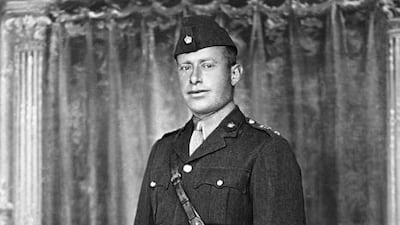In the pantheon of Arab heroes, one rarely hears about Fawzi al-Qawuqji these days. However, thanks to a fascinating biography written by British scholar Laila Parsons, titled The Commander: Fawzi al-Qawuqji and the Fight for Arab Independence, 1914–1948, Qawuqji is again a topic of interest. His is a story of ambiguities, contradictions, oversized ambitions and false hopes – in many regards a life perfectly suited to illustrate the Arab predicament in the first half of the 20th century.
Qawuqji was born in October 1894 in what is today the northern Lebanese city of Tripoli. At the time, Tripoli was still a part of the Ottoman Empire, and the boy was sent for training at the War College in Istanbul. Qawuqji fought in the First World War in the Ottoman army, though he had begun to rediscover his Arab identity before that. In 1908, the Young Turks had removed Sultan Abdul Hamid II from power and began developing a specifically Turkish-centred nationalism.
This effort, initially pursued to strengthen the empire, had the paradoxical effect of weakening its bonds, as it accentuated the separate identities of its subject peoples. This was especially true of the empire’s Arab elites. In 1912, Qawuqji was posted in Mosul, and his trip there helped reinforce in him a growing belief that there were significant differences between Arabs and Turks. The development of his Arab identity led Qawuqji to later embrace Arab nationalism and his opposition to the European powers, namely Britain and France, that had taken control of the Middle East.
Qawuqji fought the French in Syria, particularly during the Syrian uprising of 1925. From there he travelled to Saudi Arabia and Iraq, always in search of some elusive Arab ideal, seeing in Saudi Arabia’s King Abdulaziz and King Faisal of Iraq potential embodiments of his own great ambitions for the Arabs. But what he frequently saw instead were Arab divisions and infighting, not the unity promising a single Arab state.
Indeed, Qawuqji’s own proclivities are left somewhat unclear by Parsons. Was he a pan-Arabist or a pan-Syrianist? Was he in favour of a single Arab nation, or was he after a greater Syrian state? In the next major conflict in which Qawuqji participated, the 1936 revolt in Palestine, this was never quite made clear, as he called himself the “commander in chief of the Arab Revolt in Southern Syria”, not Palestine.
To Parsons, Qawuqji was both a pan-Arabist and a pan-Syrianist. Yet the two are very different notions – in many regards antagonistic to one another. This ambiguity created problems for Qawuqji, particularly with the Mufti of Jerusalem, Hajj Amin Al Husayni, who was much more of a Palestinian nationalist than he was a pan-Arabist. Husayni profoundly mistrusted Qawuqji for laying claim to Palestine as a part of Syria.
A similar tension existed with regard to Qawuqji’s own country, Lebanon, which played a surprisingly marginal role in his political career. Lebanese nationalism, whose crowning moment came in September 1920 with the declaration of Greater Lebanon by the French authorities, seemed alien to Qawuqji. He named his daughter Syria – a symbolic affirmation of his rejection of the British and French takeover of much of the Middle East and their creation of separate Arab states.
But in a sense, perhaps, the joke was on Qawuqji. Everywhere he went, he could see a region riven by dynastic divisions and centrifugal forces, working against his ideal of the one instead of the many. His friendships with King Abdulaziz and King Faisal were remarkable for being with two bitter rivals. Such realities would dot his own political path.
The only thing that allowed Qawuqji to paper over these divisions, it seems, was fighting. Taking up arms against the western powers or the Jews in Palestine was the prime antidote to the Arab rivalries all around him. War for liberation against the usurpers was a grand unifying theme, and it seems that Qawuqji was on the front lines in every new battle – perhaps to triumph against his own doubts.
He fought in Palestine for a second time in 1948, and once again lost amid Arab discord and incompetence. One can mock the dismal trajectory of pan-Arabism, but it’s difficult not to feel compassion for a man who devoted his life to a cause that seemed so often destined to bring defeat. Qawuqji survived into the 1970s, having seen the Arab collapse in June 1967, at which point he was living in Lebanon again.
I have a friend who has decorated his dining room with two sets of portraits. On one side are portraits of individuals representing the “Arab dream”; on the other those representing the “Arab reality”. It’s no surprise that most of the dreamers are difficult to identify, while those embodying the Arab reality – a gaggle of dictators, both alive and dead – are not. For all his shortcomings, at least Fawzi Al Qawuqji is not on the wrong wall.
Michael Young is a writer and editor in Beirut
On Twitter: @BeirutCalling


